Advanced Ancient Technology: Could Ancient Peruvians Soften Stone?
Ellen Lloyd - AncientPages.com - Archaeologists and other scientists have been scratching their heads trying to figure out how remarkable ancient Peruvian structures like Sacsayhuamán were constructed.
These marvelous structures consist of gigantic stones that are so heavy that our modern machinery can hardly move and put them in place.
Does the key to the puzzle lie in a certain very specific plant that gave the ancient Peruvians the possibility to soften stone or is the answer to the mystery access to advanced ancient technology that could melt stone?
According to researchers Jan Peter de Jong , Christopher Jordan Jesus Gamarra, the granite walls in Cuzco show evidence of being heated to a very high degree and vitrified- the outside surface becoming glassy and very smooth.
Based on this observation, Jong, Jordan and Gamarra draw the conclusion that "some sort of high tech device was used to melt stone blocks which were then placed and allowed to cool next to hard, jigsaw-polygonal blocks that were already in place.
The new stone would remain fixed against these stones in near-perfect precision-but would be its own separate block of granite that would then have more blocks fitted into place around it and "melted" into their interlocking positions in the wall.
In this theory, there would still be power saws and drills that would cut and shape the blocks as the walls were assembled," David Hatcher Childress wrote in his book Ancient Technology in Peru and Bolivia.
Researchers Jong and Jordan propose that several ancient civilizations worldwide were familiar with the high-tech melting of stone technology. They also say that "the stones on some of the ancient streets in Cuzco have been vitrified by some high temperature to give them their characteristic glassy texture.
Jordon, de Jong and Gamarra say that temperatures need to reach 1,100 degrees centigrade and that numerous archeological sites around Cuzco, including Sacsayhuaman and Qenko, showed signs of vitrification."
There are also indications the ancient Peruvians had access to a plant whose juices softened rock so that it could be worked into tightly fitted masonry.
In his book Exploration Fawcett Colonel Fawcett told of how he had heard that the stones were fitted together by means of a liquid that softened stone to the consistency of clay.
Colonel Fawcett told of how he had heard that the stones were fitted together by means of a liquid that softened stone to the consistency of clay. Brian Fawcett, who edited his father's book, tells the following story in the footnotes: A friend of his who worked at a mining camp at 14,000 feet at Cerro di Pasco in Central Peru, discovered a jar in an Incan or pre-Incan grave. He opened the jar, thinking it was chicha, an alcoholic drink, breaking the still intact ancient wax seal. Later, the jar was accidentally knocked over onto a rock.
This is the true story of the real Colonel Fawcett, whose life was the inspiration for the bestselling book The Lost City of Z and an upcoming movie starring Brad Pitt. A thrilling account, it tells of Colonel Fawcett and his mysterious disappearance in the Amazon jungle, which is now considered one of the greatest mysteries of the twentieth century.
The mystic and legendary British explorer Colonel Percy Harrison Fawcett disappeared in the unknown and unexplored territory of Brazil's Mato Grosso in 1925.
For ten years he had wandered the forests and death-filled rivers in search of a fabled lost city. Finally, convinced that he had discovered the location, he set out for the last time with two companions, one of whom was his eldest son, to destination ''Z,''never to be heard from again.
This thrilling and mysterious account of Fawcett's ten years of travels in deadly jungles and forests in search of a secret city was compiled by his younger son from manuscripts, letters, and logbooks. What happened to him after remains a mystery. Read more
Fawcett said "About ten minutes later I bent over the rock and casually examined the pool of spilled liquid. It was no longer liquid; the whole patch where it had been, and the rock under it, were as soft as wet cement! It was as though the stone had melted, like wax under the influence of heat."88, 57 Fawcett seemed to think that the plant might be found on the Pyrene River in the Chuncho country of Peru, and described it as having dark reddish leaves and being about a foot high. Another story is mentioned of a biologist observing an unfamiliar bird in the Amazon. He watched it making a nest on a rock face by rubbing the rock with a twig. The sap of the twig dissolved the rock, making a hollow in which the bird could make its nest."
The idea that a plant's liquid could actually enable ancient Peruvians to construct astonishing constructions like Sacsayhuamán may seem farfetched to some.
However, since modern scientists have been unable to explain how megalithic structures in Peru and other parts of the world were built, we should not dismiss any ideas.
Jean-Pierre Protzen, a French researcher made attempts to duplicate the "construction of Sacsayhuaman and Ollantaytambo. Protzen spent many months around Cuzco experimenting with different methods of shaping and fitting the same kinds of stones used by the Incas (or their megalithic predecessors).
Protzen concluded that there were still many mysteries to be solved. He was unable to figure out how the builders transported and handled the larger stones. He found that quarrying and dressing the stones could be accomplished using the stone hammers found in abundance in the area. The precision fitting of stones was a relatively simple matter, he says. He pounded out the concave depressions into which new stones were fitted by trial and error until he achieved a snug fit. This meant continually lifting and placing the stones together and chipping at them a little at a time. This process is very time consuming, but it's simple, and it works."
Protzen's attempts reflect good research and points out that modern science still cannot explain or duplicate the building feats found at both Sacsayhuaman and Ollantaytambo.
Protzen also observed that the cutting marks found on some of the stones are very similar to those found on the pyramidion of an unfinished obelisk at Aswan in Egypt. Is this a coincidence, or was there an ancient civilization with links to both sites?
The construction of several megaliths remains an ancient unsolved mystery, which is the reason why unorthodox theories cannot be discarded yet!
Written by Ellen Lloyd – AncientPages.com
Copyright © AncientPages.com & Ellen Lloyd All rights reserved. This material may not be published, broadcast, rewritten or redistributed in whole or part without the express written permission of AncientPages.com and Ellen Lloyd
More From Ancient Pages
-
 Yasuke – The First Black Samurai Caused A Sensation In Japan
Featured Stories | Oct 25, 2019
Yasuke – The First Black Samurai Caused A Sensation In Japan
Featured Stories | Oct 25, 2019 -
 Hedeby: Prestigious Trading Center And One Of The Largest Baltic Sea Ports In Viking Age
History | Jan 23, 2025
Hedeby: Prestigious Trading Center And One Of The Largest Baltic Sea Ports In Viking Age
History | Jan 23, 2025 -
 Evidence Of An Unknown Ancient Civilization In The Yucatan?
Featured Stories | Apr 6, 2024
Evidence Of An Unknown Ancient Civilization In The Yucatan?
Featured Stories | Apr 6, 2024 -
 3,000-Year-Old Geoglyphs May Depict The Heavens
Archaeology | Jun 25, 2018
3,000-Year-Old Geoglyphs May Depict The Heavens
Archaeology | Jun 25, 2018 -
 Before Ragnarok: Horrifying Fimbulwinter In Norse Mythology Was Based On Real Events
Featured Stories | Nov 1, 2016
Before Ragnarok: Horrifying Fimbulwinter In Norse Mythology Was Based On Real Events
Featured Stories | Nov 1, 2016 -
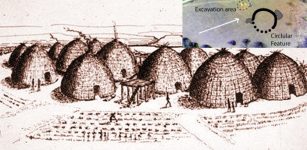 Large Earthwork At Wichita Site In Kansas – Is It Long-Lost Native American City Of Etzanoa?
Archaeology | Sep 4, 2020
Large Earthwork At Wichita Site In Kansas – Is It Long-Lost Native American City Of Etzanoa?
Archaeology | Sep 4, 2020 -
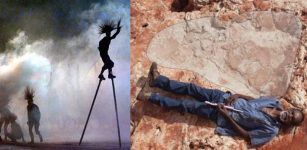 Aboriginal Creation Story Of Marala Was True – World’s Largest Dinosaur Footprints Confirm Ancient Creation Myth
Archaeology | Mar 29, 2017
Aboriginal Creation Story Of Marala Was True – World’s Largest Dinosaur Footprints Confirm Ancient Creation Myth
Archaeology | Mar 29, 2017 -
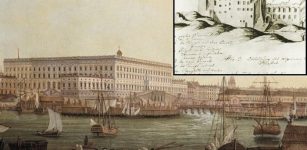 On This Day In History: Fatal Fire Broke Out In Tre Kronor “Three Crowns” Castle, Stockholm, Sweden – On May 7, 1697
News | Dec 7, 2021
On This Day In History: Fatal Fire Broke Out In Tre Kronor “Three Crowns” Castle, Stockholm, Sweden – On May 7, 1697
News | Dec 7, 2021 -
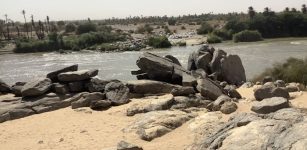 Archaeological Site Along The Nile Reveals The Nubian Civilization That Flourished In Ancient Sudan
Civilizations | Apr 14, 2022
Archaeological Site Along The Nile Reveals The Nubian Civilization That Flourished In Ancient Sudan
Civilizations | Apr 14, 2022 -
 Kap Dwa – Mysterious Two-Headed Mummified Patagonian Giant – Real Or Fake?
Featured Stories | May 20, 2021
Kap Dwa – Mysterious Two-Headed Mummified Patagonian Giant – Real Or Fake?
Featured Stories | May 20, 2021 -
 Los Millares – 5,000-Year-Old Advanced Copper City In Europe
Featured Stories | Mar 24, 2016
Los Millares – 5,000-Year-Old Advanced Copper City In Europe
Featured Stories | Mar 24, 2016 -
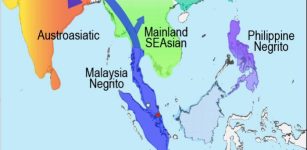 Prehistoric Human Migration In Southeast Asia Driven By Sea-Level Rise – Study Reveals
Archaeology | Feb 6, 2023
Prehistoric Human Migration In Southeast Asia Driven By Sea-Level Rise – Study Reveals
Archaeology | Feb 6, 2023 -
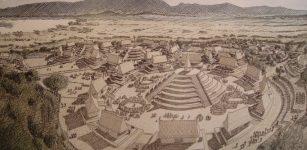 Circular Stepped Pyramids Of Guachimontones And Teuchitlan Tradition – A Lost Ancient World In Mexico
Civilizations | Mar 13, 2016
Circular Stepped Pyramids Of Guachimontones And Teuchitlan Tradition – A Lost Ancient World In Mexico
Civilizations | Mar 13, 2016 -
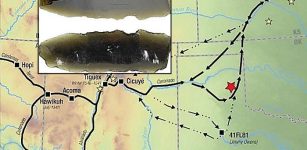 Is A Small Obsidian Artifact Linked To Expedition Searching For A Fabled City Of Gold 470 Years Ago?
Archaeology | Mar 1, 2024
Is A Small Obsidian Artifact Linked To Expedition Searching For A Fabled City Of Gold 470 Years Ago?
Archaeology | Mar 1, 2024 -
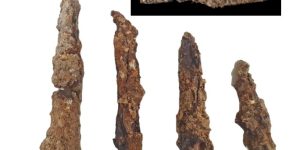 Location of Roman Ballista Machines During The Siege Of Jerusalem – Uncovered
Archaeology | Aug 17, 2022
Location of Roman Ballista Machines During The Siege Of Jerusalem – Uncovered
Archaeology | Aug 17, 2022 -
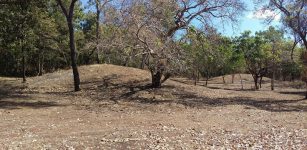 Controversial Sand Mounds In Australia Are 6,000 Years Old Man-Made Burial Mounds – Radar Scans Reveal
Archaeology | Feb 10, 2018
Controversial Sand Mounds In Australia Are 6,000 Years Old Man-Made Burial Mounds – Radar Scans Reveal
Archaeology | Feb 10, 2018 -
 Aboriginal Australians Were World’s First Astronomers Who Discovered Variable Stars – Astrophysicist Says
Archaeology | Jul 16, 2019
Aboriginal Australians Were World’s First Astronomers Who Discovered Variable Stars – Astrophysicist Says
Archaeology | Jul 16, 2019 -
 Puzzling Palpa Lines In Peru Made By The Paracas Culture Are Even Older Than The Nazca Lines
Featured Stories | Jan 2, 2018
Puzzling Palpa Lines In Peru Made By The Paracas Culture Are Even Older Than The Nazca Lines
Featured Stories | Jan 2, 2018 -
 Amazing Discovery Of A Wakizashi, Japanese Sword In Berlin-Mitte
Archaeology | Aug 28, 2024
Amazing Discovery Of A Wakizashi, Japanese Sword In Berlin-Mitte
Archaeology | Aug 28, 2024 -
 Sirius Mystery – Scientific Evidence Of Alien Contact 5,000 Years Ago – Book Review
Civilizations | Apr 1, 2014
Sirius Mystery – Scientific Evidence Of Alien Contact 5,000 Years Ago – Book Review
Civilizations | Apr 1, 2014



